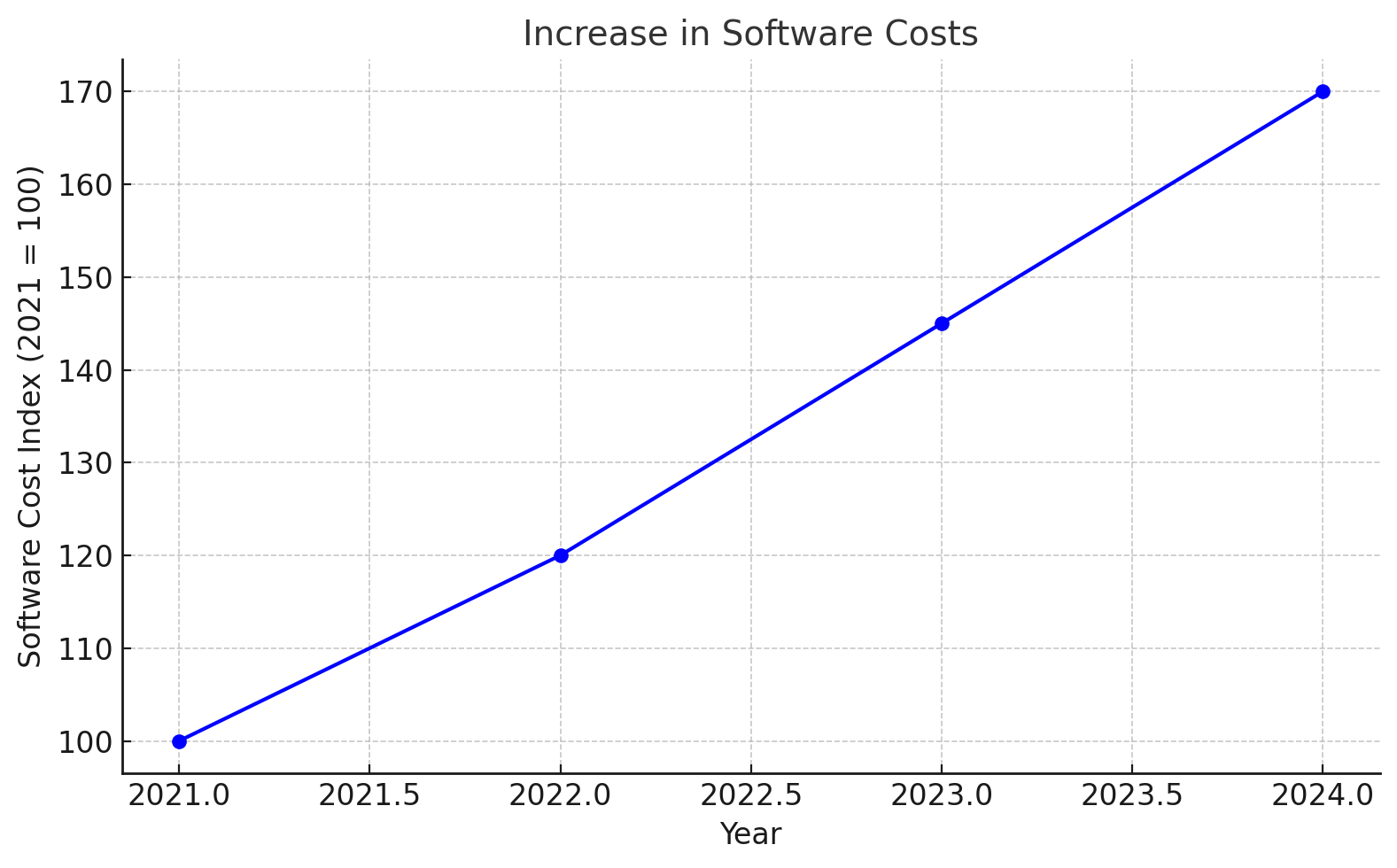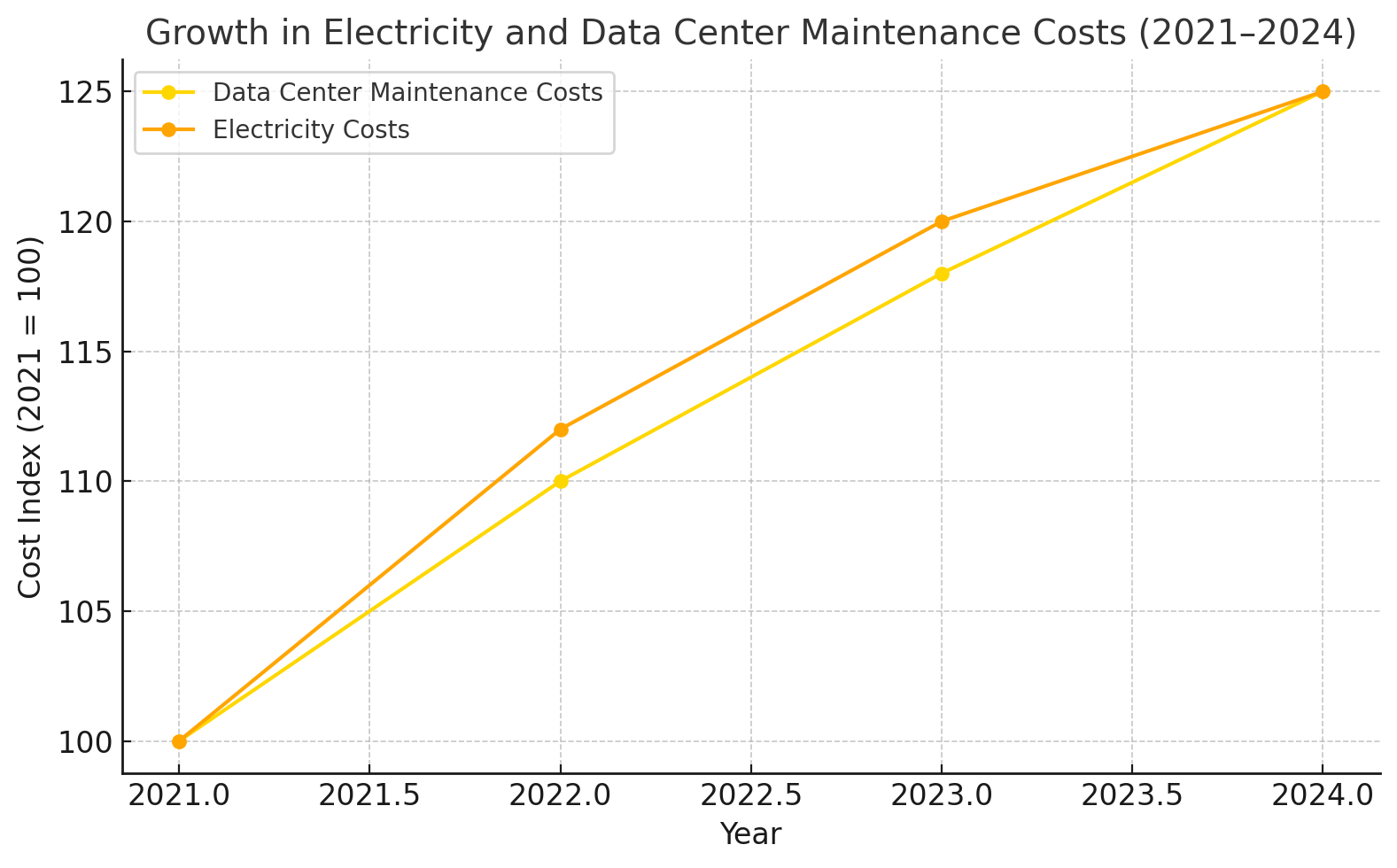Why Hosting Prices Keep Rising: An Overview of Trends and Reasons for Tariff Increases
In recent years, users have increasingly observed a rise in the prices of hosting services. This trend became particularly noticeable in 2024, when major companies such as Reg.ru, Timeweb, Masterhost, Ru-Center, and others announced tariff increases for their services. This article explores the key reasons behind the price hikes, their impact on businesses and users, and the necessity of such changes for the sustainable growth of the industry. The analysis also covers international markets, where rising tariffs are becoming a notable trend as well.
Key Reasons for the Increase in Hosting Prices
Rising Costs of Equipment and Infrastructure
One of the primary reasons for the rising cost of hosting services is the increasing price of server hardware and engineering infrastructure. According to leading Russian hosting providers, the prices of servers and components have grown by 20–30% over the past year. The shortage of imported components and rising logistics costs have forced Russian companies to purchase equipment at significantly higher prices.
Additionally, the heavy load on data centers driven by growing demand for virtualization and cloud hosting services has necessitated the modernization of engineering systems and the adoption of advanced cooling technologies. These factors also contribute to the final cost of hosting services.
Global Trends and International Providers
The increase in hosting prices is also evident on the international stage. Global hosting providers such as AWS, Google Cloud, and DigitalOcean have faced rising costs for hardware and the transition to more powerful and energy-efficient servers. These companies regularly update their pricing, driven by the need to maintain high levels of performance and availability for their services.
Increased Software Costs
The departure of international competitors from the Russian market has significantly limited the availability of software, particularly in the field of cybersecurity. This has led to a 20–30% increase in the cost of software solutions. Higher software expenses also stem from the need for frequent updates and the implementation of additional features to meet modern security standards.

Many international companies are also increasing their spending on software to enhance data protection and align their services with global standards such as GDPR. For instance, SiteGround and AccuWeb Hosting actively invest in software for data security and automated updates, which ultimately drives up the cost of their services.
Inflation and Rising Interest Rates
With inflation on the rise and the Central Bank of Russia increasing the key interest rate to 21% in 2024, companies are facing higher costs for borrowed funds. This directly impacts operational expenses, as many processes rely on credit financing. Additionally, the increased tax burden, particularly the value-added tax (VAT), further complicates pricing strategies and drives up service costs.
Global Economic Instability
A similar situation is observed abroad. Inflation in the EU and the US, coupled with increased tax burdens and rising interest rates, significantly impacts the pricing of services. As a result, providers like HostGator and Bacloud are gradually adjusting their tariffs to offset growing operational costs.
Rising Energy Costs and Data Center Expenses
According to major hosting providers, the cost of renting and maintaining data centers has increased by 20–25%. This is largely due to higher electricity rates and growing expenses for infrastructure maintenance.

In Europe and the US, energy costs are also on the rise, particularly due to the transition to energy-efficient solutions and renewable energy sources. Companies like Google Cloud and Gcore are investing in “green” energy, which increases their expenses but aligns with the global trend toward sustainability. These costs inevitably lead to adjustments in their service pricing.
Regulatory Requirements and Security Investments
The introduction of hosting registries and requirements for installing equipment to filter internet traffic has forced companies to invest heavily in infrastructure modernization. For major players, these costs can reach up to $1 000 000, while medium and small hosting providers face expenses of $100 000 - $200 000.
International companies face similar demands in the fields of data security and user protection. For example, AWS and DigitalOcean regularly implement new security systems and upgrades to comply with GDPR requirements in Europe and ensure the protection of customer data worldwide.
The Impact of Price Increases on Clients and the Hosting Market
Small and Medium-Sized Businesses
For small and medium-sized businesses, rising hosting prices can have a significant impact, leading to higher operational costs and reduced profitability. Many entrepreneurs are forced to optimize their IT expenses, which may result in cutting back on additional services provided by hosting companies.
Individual Users
The impact is even more pronounced for individual users. Hosting costs among major providers have risen by an average of 20–30%, translating to an additional $3–$5 for a small server. For users with limited budgets, this increase can be a considerable financial burden.
Large Companies
For large enterprises, tariff increases also add financial pressure. However, many of these companies use customized plans with tailored pricing, which mitigates the impact of price changes.
Why Price Increases Are Necessary for the Sustainable Development of the Industry
The rise in hosting service tariffs is driven by objective economic factors, many of which are tied to maintaining the quality and security of the services provided. Here are a few reasons why price increases are a necessary step for the sustainable growth of the hosting industry:
Ensuring Stability and Service Availability
To deliver high performance and uninterrupted availability, hosting providers must regularly update their infrastructure and perform technical maintenance. These efforts require substantial financial investments, and price increases help offset rising costs to maintain server stability and reliability.
Enhancing Security Standards
Modern security demands are becoming increasingly stringent, requiring companies to invest heavily in safeguarding client data. Higher tariffs enable hosting providers to cover the costs of implementing advanced security technologies and complying with new regulatory requirements.
Improving Customer Support and Service Quality
Many companies face a shortage of skilled professionals, and competition for experienced talent drives up labor costs. Increasing tariffs allows hosting providers to enhance customer support quality by hiring qualified personnel for technical assistance.
Maintaining Competitiveness and Driving Innovation
In the era of global digitalization, hosting providers must stay attuned to market trends and adopt innovative solutions. Price increases enable companies to invest in emerging technologies such as artificial intelligence, machine learning, and cloud services, improving service quality and attracting new customers.
Conclusion
The increase in hosting service tariffs is a necessary measure aimed at maintaining the quality and security of services provided. In the face of rising costs for infrastructure, equipment, and software, as well as stricter regulatory requirements, hosting companies are compelled to adjust their pricing policies. Similar trends are observed in international markets, underscoring the global nature of this shift. These changes contribute to the development and stability of the industry, ensuring that users continue to receive high-quality and reliable services.
